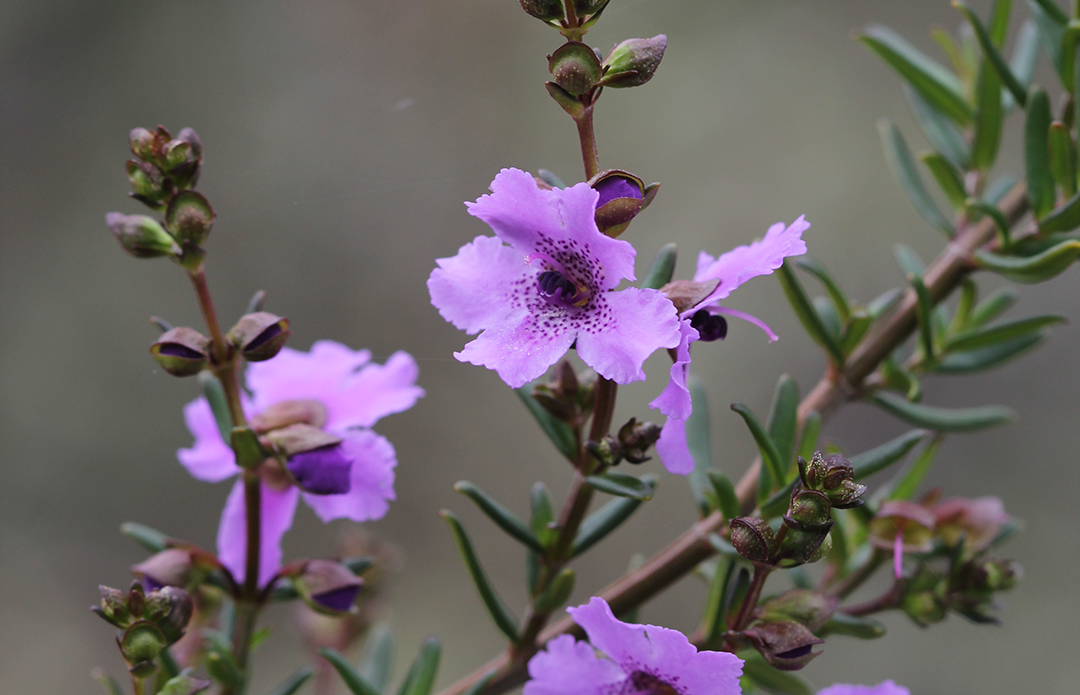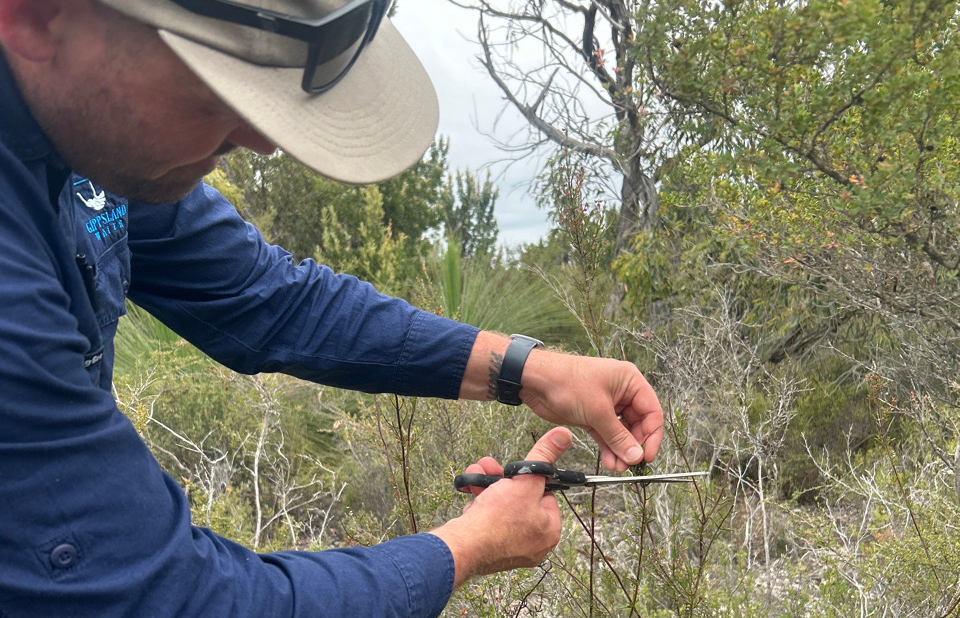While sage, rosemary and thyme enjoyed a trip to Scarborough Fair, their long-lost sibling, Wellington mint-bush, was left behind and all but forgotten.
Until now, that is…
Through a partnership with Gippsland Water, University of New England Honours student, Shannon Dwyer, is working on a ground-breaking project that could revive populations of the Wellington mint-bush, a threatened Australian native found only in a small pocket of woodland in Gunaikurnai Country, Gippsland, Victoria.
Part of the Lamiaceae family, which includes popular culinary herbs such as thyme, the Wellington mint-bush has just two populations remaining in the wild.

Image: Wellington Mint-bush
Because of this, Shannon’s research could be just the thing the species needs to avoid extinction.
“My project involves using next-generation genetic sequencing to measure the genetic diversity and fitness of the two remaining wild populations of the nationally threatened Wellington mint-bush (Prostanthera galbraithiae),” says Shannon, who is studying a Bachelor of Science with Honours online.
“This, and some of the other elements of the project, will allow us to understand whether remaining populations are in need of genetic rescue by translocating plants between populations and how this might best be completed.”
Translocation involves taking whole plants, seed, or vegetative materials and introducing them to former, current or potential habitat to create new populations, or supplement existing ones.
While it’s used as a last-resort, it’s becoming an increasingly common method to assist in the conservation and recovery of species, and Shannon says it’s a natural choice for the Wellington mint-bush due to the number of threats it faces.
“It is very likely that the Wellington mint-bush has had a naturally restricted range historically; however, broadscale land clearing, the introduction of herbivorous pests and alterations in fire regimes over the past couple of hundred years have restricted suitable habitat, reduced numbers and put the species at risk of extinction. The two remaining populations are more than 30 kilometres apart, which is beyond the realistic range of any likely pollinators,” says Shannon.
With climate change adding another layer to the threats posed to the Wellington mint-mush, Shannon says genetic rescue couldn’t come at a better time.

Image: Shannon Dwyer collecting seeds from a Wellington Mint-bush plant.
“The benefits of increasing genetic diversity are well-studied and amongst many things, allow species to be more resilient and adaptable to future changing conditions.”
Shannon’s research follows on from a previous study he undertook with his employer, Gippsland Water, in 2018 where they tested the wild translocation of the species for the first time.
“This project was aimed at increasing numbers and conserving the potentially unique genes of one of the remaining populations,” he says.
“We successfully increased numbers and demonstrated translocation for this species will work, but avoided combining the two remaining populations until further research was completed. Now, here we are.”
Shannon’s research is due to wrap up in late 2025, and is being done in partnership with Gippsland Water, supported by the Royal Botanic Gardens Victoria (RBGV), Victorian Department of Energy, Environment and Climate Action, and Parks Victoria.
His project is supervised by Associate Professor Rose Andrew (UNE), and co-supervised by Dr Tara Hopley and Dr Megan Hirst (RBGV).


